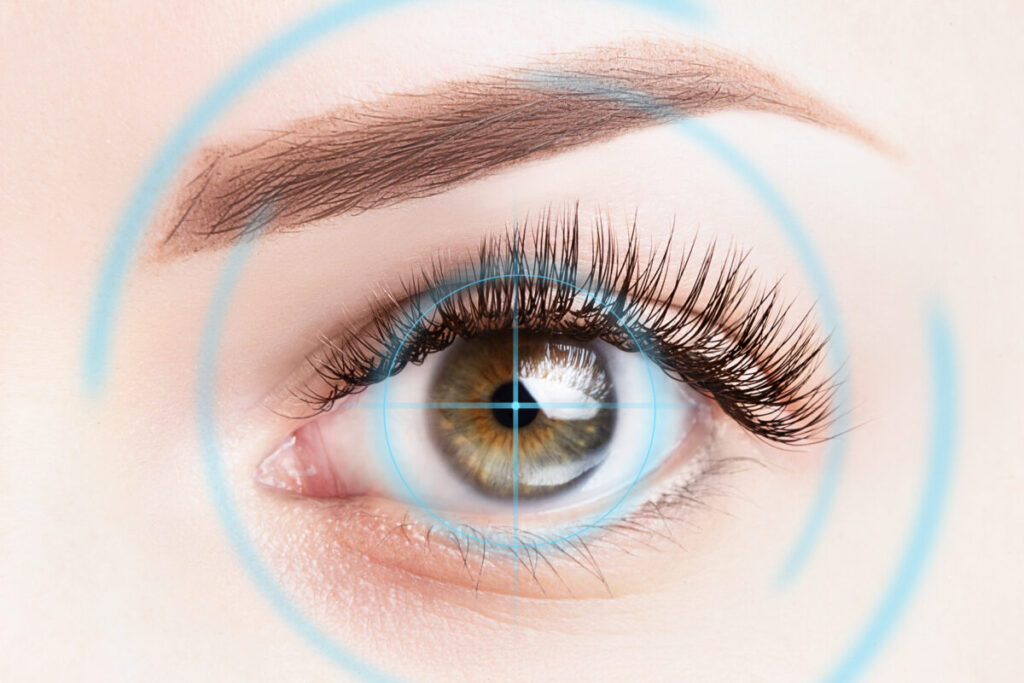Seeing Clearly: The Transformative Benefits of PRK Surgery

Photorefractive Keratectomy (PRK) is a type of refractive surgery that has been helping people achieve clearer vision for decades. While any refractive surgery offers many benefits, PRK is a preferred choice for many with over a 95% success rate.
What is PRK Surgery?
PRK is a laser eye surgery designed to correct vision problems such as nearsightedness, farsightedness, and astigmatism. Unlike LASIK, which involves creating a flap in the cornea, PRK’s process works by removing the thin outer layer of the cornea (the epithelium) and reshaping the underlying corneal tissue using an excimer laser. The epithelium naturally regenerates over a few days after the procedure.
WARNING: This article may contain a video that may be disturbing to some viewers. Viewer discretion advised.
Key Benefits of PRK
Suitable for Candidates with Thin Corneas
One of the significant advantages of PRK over LASIK is its suitability for patients with thinner corneas. PRK reshapes the surface of the eye to correct a patient’s prescription. According to UCLA Health, the surface layer of cells removed with PRK is less than 10% of the cornea resulting in more available corneal tissue afterwards compared to LASIK.
No Risk of Flap Complications
Since PRK does not involve cutting a flap in the cornea, there are no risks associated with flap complications, such as flap dislocation or flap-related infections. This can be particularly beneficial for individuals with active lifestyles or professions where eye injuries are more likely.
Long Term Stability
PRK has a track record of providing stable long-term results. The absence of a flap means there is less chance of postoperative issues affecting the cornea’s structural integrity over time. Many patients enjoy lasting vision correction with minimal risk of regression.
Ideal for those Suffering from Dry Eyes
Patients with preexisting dry eye conditions often find PRK more suitable than LASIK. The PRK procedure tends to have a lower risk of increasing dry eye symptoms that can impact tear production and distribution. PRK may be a good consideration for patients already dealing with difficulty in contact lens wear due to dryness, especially in drier climates.
Safer Option for High-Impact Activities
For athletes or individuals involved in high-impact activities such as karate or boxing, PRK can be a safer option. Without a corneal flap, there is no risk of the flap being dislodged or damaged due to trauma. PRK is preferred for military personnel, boxers, and other sports enthusiasts.
Comprehensive Vision Correction
PRK effectively treats a wide range of refractive errors, offering significant improvements in vision quality. Whether you’re nearsighted, farsighted, or have astigmatism, PRK can provide clearer and sharper vision, reducing or even eliminating the need for glasses or contact lenses.
Proven Technology and Technique
PRK is one of the longest standing laser eye surgeries, with a proven safety and effectiveness track record for the last 30 years. Advancements in technology and technique have further enhanced the success rates and patient’s satisfaction associated with this procedure.
The PRK Procedure: What to Expect
The PRK procedure typically involves the following steps:
Consultation
We highly suggest coming in for a free consultation to fully evaluate your candidacy for PRK surgery. A consultation can access the shape and thickness of the cornea to determine what the safest vision correction procedure is for a patient. The patient also has to opportunity to discuss lifestyle concerns with the doctor to ensure refractive surgery will meet the patient’s specific goals.
Surgery Day
The procedure is performed on an outpatient basis, usually taking about 10-15 minutes in the operating room. The actual laser procedure takes about a minute per eye to correct vision. During the procedure, the surgeon uses several anesthetic eye drops to numb the eye. The surgeon applies a diluted alcohol solution to the corneal surface to soften the outer layer and gently removes the epithelium. Then, the surgeon uses the treatment (excimer) laser to reshape the cornea for the desired prescription, with the assistance of an eye tracker to ensure precise vision correction. The surgeon places a soft contact lens on the cornea to act as a bandage while a new layer of the epithelium regenerates. The doctor typically removes this contact lens about a week later, and most patients can resume work and lifestyle activities.
Recovery
We recommend a patient take about a week before returning to work. Patients will experience mild discomfort after PRK for 2-3 days, which they can manage well with over-the-counter and prescription medications. Vision is usually about 20/40 or fairly functional vision around one week post-operatively and continues to improve weekly for patients. Fluctuation of your vision is normal up to the first month. Complete healing and vision stabilization can take three to six months. While the initial healing will take longer than LASIK, the end vision result is just as good as LASIK.
Conclusion for PRK Surgery
PRK offers numerous benefits that make it an attractive option for vision correction. Its suitability for patients with thin corneas, lack of flap complications, long-term stability, and effectiveness for individuals with dry eyes or active lifestyles are just a few of the reasons why PRK continues to be a trusted choice. If you’re considering refractive surgery, schedule your free consultation with our office to determine if PRK is the right option for you.
Embark on your journey to clearer vision and experience the freedom that comes with life without glasses or contact lenses. PRK might just be the key to unlocking your best possible vision.
